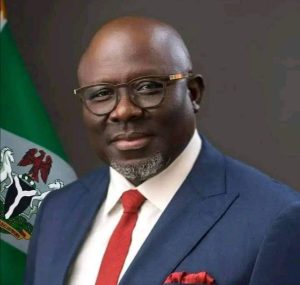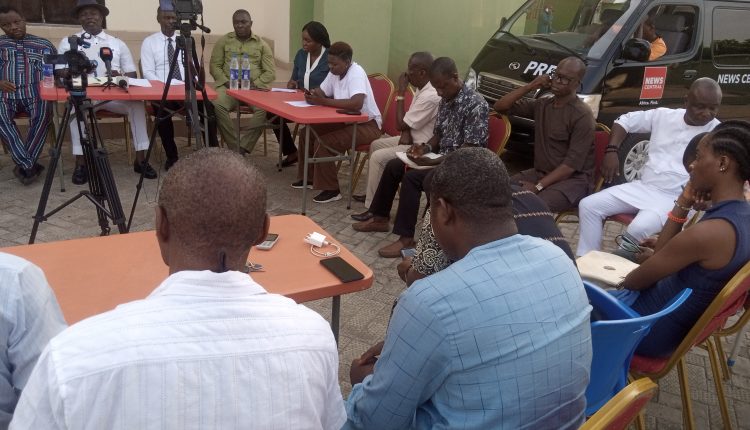DELTA GOVERNMENT IMAGE MANAGERS WAKE UP AND OPEN UP THE WINDOWS
By Peter Legacy
Asian writer, Indira Gandhi said; “People often forget to discharge their duties, but always remember all their rights.” Governor/Government Image makers and managers, who come in various titles; commissioner for information, Special Advisers on Media and communication,Chief Press Secretaries, Directors of Orientation, Communication Managers, Executive Assistants on Media and communication, Senior Special Assistants and Special Assistants on Media and Communications are essentially consultants to the governor or the government. These clusters of information/ media managers are by duty and responsibility expected to advise and assist the governor and the government, as the case may be, help clarify the government’s point of view to it’s audience through media releases and interviews . They are expected to monitor socio economic and political trends that might affect the government and the politician as the case may be. These have a responsibility to recommend ways to enhance the government’s image on the basis of emanating or prevalent trends.
 In Delta state the state government image managers have done a little above average in conveying the message of the activities of government, but have failed colossally in recommending or facilitating ways and means of enhancing the image of the government to ensure necessary and appropriate approach. This isn’t just about this new government of Governor Sheriff Oborevwori, but also the proceeding government of Sen Arthur Ifeanyi Okowa. A good pointer to this was the mismanagement of information communication and image presentation that fenced the government from getting authentic information and feedback and possibly needed incentive to adjust and adapt to the reality of the time. This colossal flop led to the embarrassing electoral outcome in the national elections in the state. This burgeoning circumstance finds expression in the conflict of roles and misapplication of role identities. Who is the journalist, who is the Public Relations/Image manager? This expedient mutual relationship, is it in the consciousness? Are their role overlaps? The image managers, have they abdicated their duties and become active politicians?
In Delta state the state government image managers have done a little above average in conveying the message of the activities of government, but have failed colossally in recommending or facilitating ways and means of enhancing the image of the government to ensure necessary and appropriate approach. This isn’t just about this new government of Governor Sheriff Oborevwori, but also the proceeding government of Sen Arthur Ifeanyi Okowa. A good pointer to this was the mismanagement of information communication and image presentation that fenced the government from getting authentic information and feedback and possibly needed incentive to adjust and adapt to the reality of the time. This colossal flop led to the embarrassing electoral outcome in the national elections in the state. This burgeoning circumstance finds expression in the conflict of roles and misapplication of role identities. Who is the journalist, who is the Public Relations/Image manager? This expedient mutual relationship, is it in the consciousness? Are their role overlaps? The image managers, have they abdicated their duties and become active politicians?
In principle, the task of journalists and Public Relations is to convey messages to the public or audience. The difference, however, lies in the purpose of getting the message; The journalist assemble and share news for the audiences benefit, while Public Relations is for imaging purposes. PR involves managing communication between organizations, governments or an individual and the media.
Image managers provide information to journalists for news stories, while the journalist maintain objectivity and verify information independently.
Politicians depend on journalists for publicity , while journalists rely on politicians and politics to provide them with news. This is where the government image managers in Delta state appears to have gone to sleep in Delta State. One wouldn’t know what they are telling the politicians, it is difficult to know what recommendations they are making to the government and the politicians. The journalist and the organized media can inflict damage on the reputation, with sometimes devastating effects for the electoral prospects of politicians or governments, owing to communication mismanagement, not essentially because it was intended.
Nigerians and indeed, Deltans no longer trust the politician and the image managers , to provide an unbiased information, which is why they are now taking matters into their own hands . Going online to conduct their own research and participate in civic discussions with their neighbours. Regardless of this atmosphere that has occasioned citizen journalism, the need for the trained and integrated journalist is even more now than ever.
The biggest challenge now is that the media question has been reduced to process and very few about Policy. But make no mistake, we have a far more sophisticated audience today than anytime in history; one that sees more clearly behind the manipulations and stagecraft of the political leaders. Image managers must rise to the occasion and be resourceful, not as bodyguards, rather they should open up the windows and allow light and healthy ventilation.

Through imaging, it is possible to generate, reinforce, manage and change perceptions and attitudes. Imaging is the process of generating and maintaining a specific public identity formed on the basis of basic positive characteristics of individuality. It is in this sense that imaging in politics consists of the way people perceive a particular person, party or idea, based on specific personal characteristics and qualities made public through communication, media and technology. As a communicative structure, the imaging ensures accuracy in the transmission of information and the coincidence of the sign systems of the communicator and the recipient.
Although image making has been part of Nigerian and Delta state politics for some time, recent years have focused attention upon the professional Political image maker and the use of the mass media in image making. There are two major dimensions of image making, one stresses qualities a politician projects, the other the predispositions voters project upon candidates. Each dimension attributes differing tasks to the political image maker. A more useful view is to regard image making as a joint enterprise of politicians, professionals, and the electorates. Since voters seek certain role and stylistic qualities in their ideal candidates, professional image makers act as brokers using the mass media to highlight appropriate qualities of clients. In striving to make voters aware of, interested in, and favorable to their candidates, professionals have adopted a variety of changing techniques in the last two decades, techniques gradually adapted to the underlying character of mass communication. The relative success of these techniques depends upon the specific goals sought and the increasing professionalization in image making.


